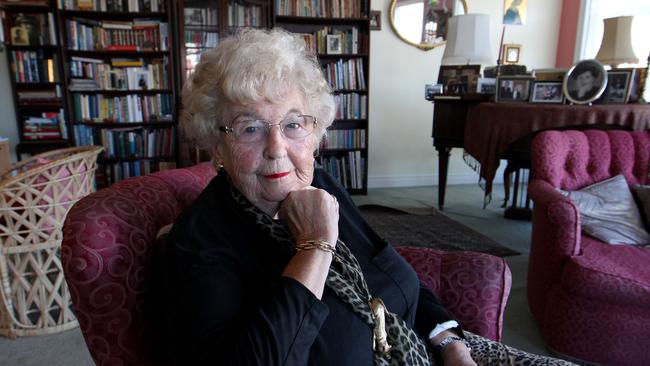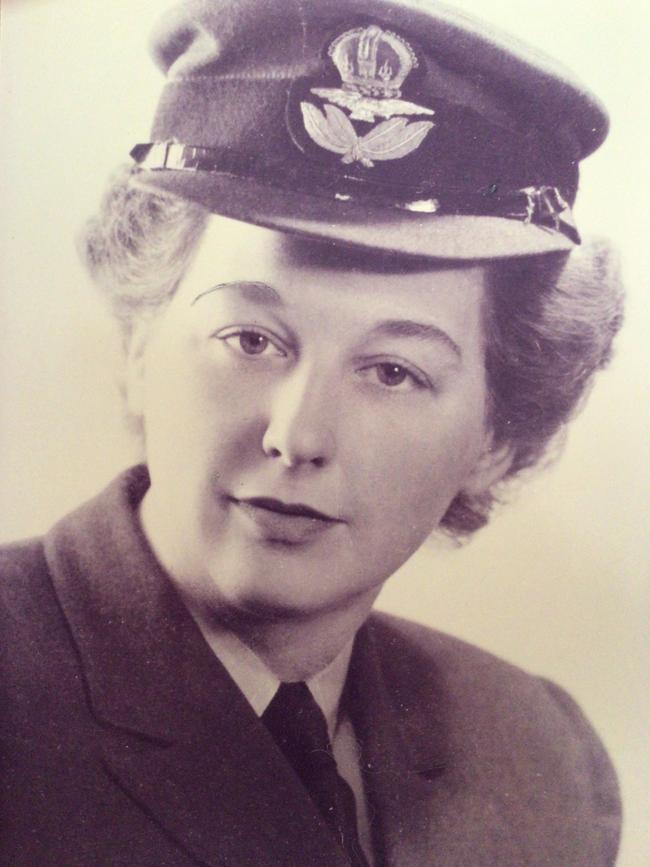Modest Molly Sasson spent her life protecting Australia from threats
Acclaimed intelligence officer Molly Sasson surely is one of the greatest Australians we have had the good fortune to call ours.

In 1940, before the soil of Europe was sodden with Jewish blood, but at a time when not everyone understood Hitler’s unspeakable cruelty was in full swing, a young Dutch woman studying medicine had her world turned upside down.
The Netherlands, as in World War I, remained neutral. But this war would not be fought around and about the little nation. Hitler decided to take it. As they had Poland months before, Hitler’s Nazis launched overwhelming invasions of France, Belgium and Holland on May 10, 1940.
Molly Sasson was 19 and studying medicine in The Hague. The greatest convulsion of the 20th century was uprooting her life and that of almost everyone else. She died last month in Melbourne aged 101.
The events that unfolded over the more than 80 years in between rank Sasson as having lived one of the most remarkable lives of the century, and surely as one of the greatest Australians we have had the good fortune to naturalise.
Speaking four European languages, and posing as a Red Cross employee, she worked behind enemy lines trying to locate the launch sites of the Nazis’ terrifying V1 and V2 flying bombs. She was given an explosive device and asked to try to assassinate a leading Hitler deputy. She missed him, but translated for him at the Nuremberg Trials at which he and much of the Nazi leadership were found guilty and hanged. After the war, living in London, she worked for MI5 and MI6 rooting out communists spies betraying the West.
Sir Charles Spry, the legendary and long-term boss of ASIO, spent 12 years trying to lure Sasson to Australia. On the day she arrived to start in 1969 he suffered a heart attack and never returned to work. Surrounded by some hostility and much misogyny, she quickly rose through ASIO’s ranks but always thought there was something wrong inside the agency.
For years every move to counter Kremlin agents here failed. She came to the conclusion there was a rat in the ranks – a communist sympathiser employed by ASIO. She bravely brought this to the attention of the Whitlam government in 1974. Sasson came under pressure from colleagues, but she was right. Things were so bad, the US downgraded high-level intelligence contacts with Australia.
A 1993 report conducted by former Australian ambassador to the US Michael Cook for the Keating government is firmly believed to have confirmed Sasson’s claim; indeed insiders believed Cook identified several Soviet agents within our intelligence systems. That report remains secret to this day.

Paul Monk, himself a former intelligence officer, and a regular contributor to The Australian, spoke to Sasson about the Cook Report and proofread her biography, More Cloak Than Dagger. He described her “as a kind of mild-mannered … Margaret Thatcher”.
Close friend Drew Thompson met Sasson while working on a documentary about The Dismissal and described her as a woman of “incredible strength and conviction”, with a “devilish humour”. “She dedicated her life to serve and protect us all – for decades.”
Opposition home affairs spokesman Senator James Paterson knew her well and said on Friday: “Molly Sasson epitomises why her generation is rightly called the greatest. She gave a lifetime of quiet service to the national security of our country and we should all be deeply grateful.”
ASIO director-general Mike Burgess this year arranged a video interview of Sasson to use in training staff. He wrote to her: “Thank you for taking the time to share your memories with my team. ASIO is very grateful for your service. I have enclosed the Director-General’s medallion as a gift.”





To join the conversation, please log in. Don't have an account? Register
Join the conversation, you are commenting as Logout